#9th century bce
Text
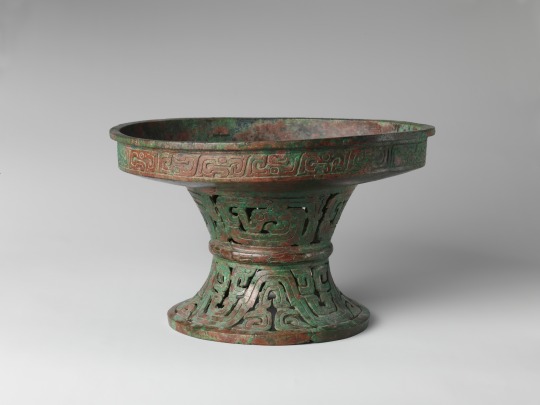
Food serving vessel (Pu), late 9th–early 8th century BCE
Western Zhou dynasty (1046–771 BCE), China
Bronze
H. 6 1/8 in. (15.5 cm); Diam. 9 1/2 in. (24.1 cm)
Collection of the Metropolitan Museum of Art
#Chinese#bronze#Western Zhou dynasty#zhou dynasty#art#art history#9th century bce#8th century bce#The Met#metropolitan museum of art#metal
7 notes
·
View notes
Text
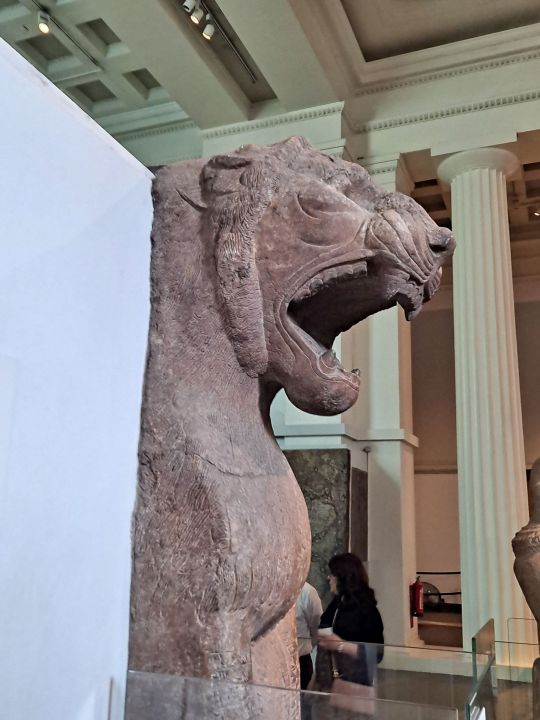
Assyrian guardian lion
Nimrud, temple of Ishtar Sharrat-niphi
About 865-860 BCE
British Museum
London, June 2022
87 notes
·
View notes
Text

Assyrian alabaster relief of an Eagle-Headed Winged Figure from the ancient city of Nimrud, dating back to the 9th century BCE. The Pergamon Museum, Berlin, GERMANY.
Photo by Babylon Chronicle
2K notes
·
View notes
Text
trying to explain a plot point or character in DC comics to someone who knows nothing abt comics is like.
okay so last year in Batman/Superman World's Finest they- hold on no, you need more context. okay so in 2016 DC started- hm, okay actually, in 2011, flashpoi- no hold on we need to go further back.
in 1985, there was a crisis and- hm no that still doesn't- okay in the silver age- ah you don't know what that is, uh, well you see in 1938, action comics- no that's not the full picture either.
flash gordo- no. uhh the first american comic book came out in 1842 and- hold on. johannes gutenburg invented the printing press in 1436- actually woodblock printing in china goes back to the 9th century and- well paper was invented around 105 AD and- cuneiform tablets were used around 3500 BCE and then- oh hm maybe i should explain the... okay so in ancient Mesopotamia- ah fuck it.
in the beginning, god created-
1K notes
·
View notes
Text
[Hanfu · 漢服]Chinese immortal Hanfu <西王母/Queen Mother of the West> Based On Yuan Dynasty Taoist Temple Mural<永乐宫/Yongle Palace>
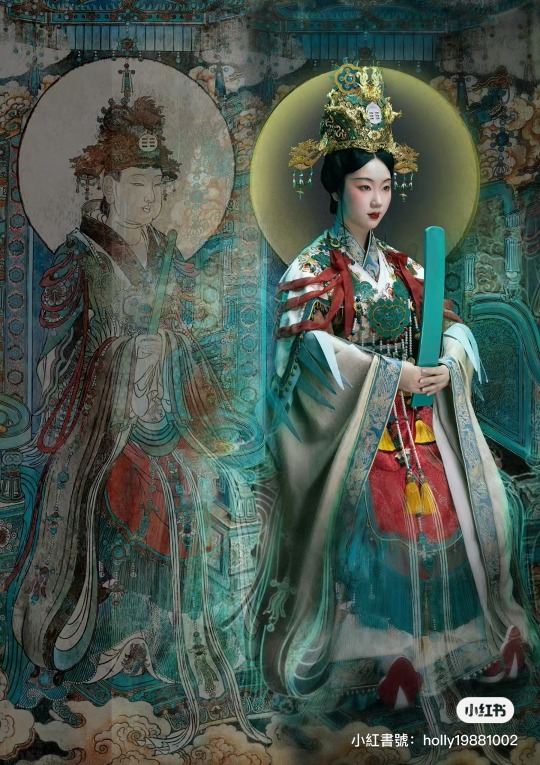
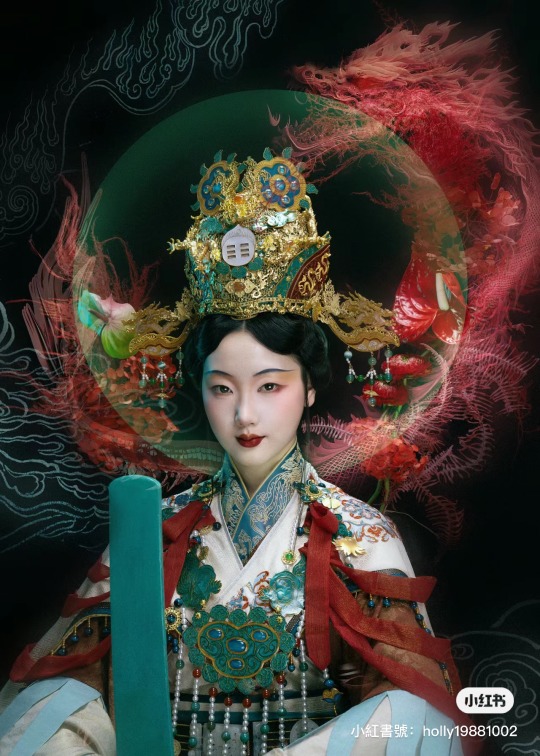



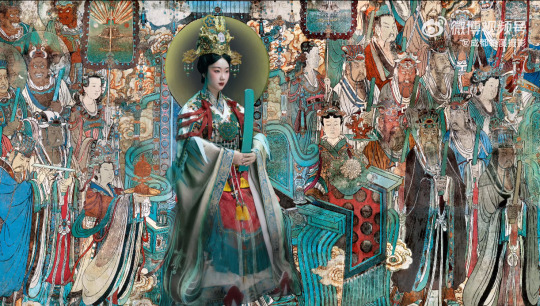
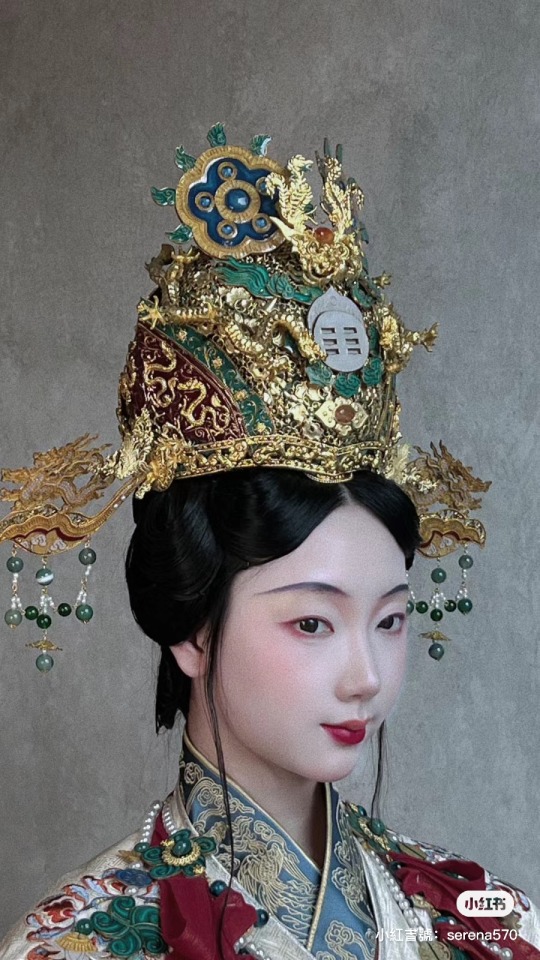
【Historical Artifacts Reference 】:
▶ China Yuan Dynasty Taoist Temple 永乐宫/Yongle Palace Mural


<西王母/Queen Mother of the West>
The Queen Mother of the West, known by various local names, is a mother goddess in Chinese religion and mythology, also worshipped in neighbouring Asian countries, and attested from ancient times.
The first mentions of the Queen Mother date back to the oracle bone inscriptions of the Shang dynasty (1766 – 1122 BCE).
One inscription reads:
Crack-making on day IX (9th day), we divined. If we make offering to the eastern mother and the western mother, there will be approval.
Western Mother refers to an archaic divinity residing in the west. The exact nature of the Mother divinities in the Shang dynasty is unclear, but they were seen as powerful forces deserving of ritual by the people of the Shang dynasty.
Originally, from the earliest known depictions of her in accounts like the Classic of Mountains and Seas during the Zhou dynasty, she was a ferocious goddess of death with the teeth of a tiger, who rules over wild beasts and sends down heavenly punishments such as pestilences. She was also mentioned as an authority ruling over other divinities such as Jiutian Xuannü, a goddess of war and sex.
Other stories hold that she is a mountain goddess or a divine tigress. She is also popularly thought to have blessed the Eight Immortals with their supernatural abilities.
After her integration into the Taoist pantheon, she gradually took on associations with other aspects, such as immortality, as well.
The Queen Mother of the West is most often depicted holding court within her palace on the mythological Mount Kunlun, usually supposed to be in western China (a modern Mount Kunlun is named after this). Her palace is believed to be a perfect and complete paradise, where it was used as a meeting place for the deities and a cosmic pillar where communications between deities and humans were possible.At her palace she was surrounded by a female retinue of prominent goddesses and spiritual attendants. One of her symbols is the Big Dipper.
Although not definite there are many beliefs that her garden had a special orchard of longevity peaches which would ripen once every three thousand years,others believe though that her court on Mount Kunlun was nearby to the orchard of the Peaches of Immortality. No matter where the peaches were located, the Queen Mother of the West is widely known for serving peaches to her guests, which would then make them immortal. She normally wears a distinctive headdress with the Peaches of Immortality suspended from it.
Flourishing parasols, we reach the chronograms' extremity;
Riding on the mist, I wander to Lofty Whirlwind Peak.
The Lady of the Supreme Primordial descends through jade interior doors;
The Queen Mother opens her Blue-gem Palace.
Celestial people—What a Crowd!
A lofty meeting inside the Cyan Audience Hall.
Arrayed Attendants perform Cloud Songs;
Realized intonations fill the Grand Empty Space.
Every thousand years, her purple crabapple ripens;
Every four kalpas, her numinous melon produces abundantly.
This music differs from that at the feast in the wilderness—
So convivial, and certainly infinite.— Wu Yun (Complete Tang Poems 1967, line 4942)
One of the earliest written references to the Queen Mother comes from the writings of the Taoist writer Zhuangzi (c. 4th century BCE):
The Queen Mother of the West obtained it [the Dao]... ...and took up her seat at Shao kuang. No one knows her beginning; no one knows her end.
Zhuangzi describes the Queen Mother as one of the highest of the deities, meaning she had gained immortality and celestial powers. Zhuangzi also states that Xiwangmu is seated upon a spiritual western mountain range, suggesting she is connected to not only the heavens, but also to the west.
Legendary encounters
In Tu Kuang-ting's text, he includes narrative accounts of the Queen Mother's encounters with legendary Chinese heroes. One such account narrates an encounter between the Queen Mother and Laozi (Lord Lao):
"In the 25th year of King Chao of the Chou dynasty (1028 BCE) …"
"…Lord Lao and the realized person Yin Hsi went traveling…"
"…on their behalf, the Queen Mother of the West explicated the Scripture of Constant Purity and Quiet."
In this account, the Queen Mother plays the role of Laozi's superior and is credited with the ultimate authorship of the Dao De Jing. This dichotomy of the Queen Mother as the superior is a characteristic of Shangqing Taoism, a goddess worshiping sect of Taoism of which Tu Kuang-ting was a master. There is also an account of a meeting between the Queen Mother and Laozi in Tang poetry.[18] This account however, being of traditional Taoist thought, has the Queen Mother taking an inferior role to Laozi, calling him "Primordial Lord" (the title of his highest manifestation) and pays homage to the sage.

<China Han Dynasty stone-relief showing 西王母/Queen Mother of the West from Sichuan,China>

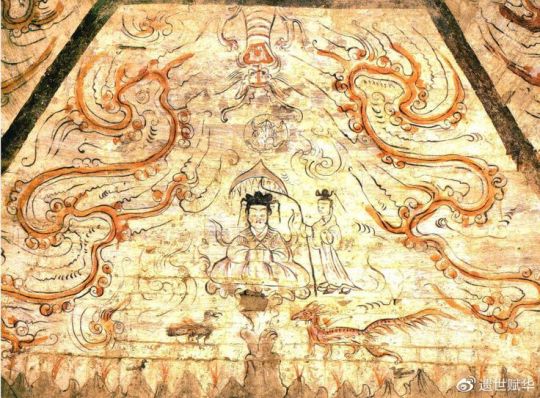
<China Wei and Jin Dynasties Mural showing 西王母/Queen Mother of the West>
————————
📸Photography post-production :@小何力
👗Hanfu & 👑Crown:@雁鸿Aimee
💄 Makeup:百丽 (临溪摄影)
👭Model:@清音音音音
🔗 Weibo:https://weibo.com/1648616372/O2R5bpBud
————————
#chinese hanfu#immortal hanfu#西王母/Queen Mother of the West#Chinese mythology#hanfu#hanfu accessories#hanfu_challenge#chinese traditional clothing#china#chinese#chinese history#china history#漢服#汉服#中華風#小何力#雁鸿Aimee#永乐宫/Yongle Palace
232 notes
·
View notes
Text

Orthostat Relief: Lion-Hunt Scene
Syria, Hittite, 10th−9th century BCE
219 notes
·
View notes
Text
a complete list
so we got the following already:
AFAB = assigned female at birth
AMAB = samesies but for the bros
ACAB = fuck them pigs
AHAB = guy who wants to fuck and/or kill a sperm whale
so I'm gonna give you the other 22. ready? let's go
AAAB: the muuuscle in your miiidseeection
ABAB: 🔥🔥swedish band typo🔥🔥
ACAB: fuck them pigs
ADAB: world's most rad dance move
AEAB: assigned evil at birth
AFAB: doctor said you were a dame right when you slunk out the pusspuss
AGAB: what the doctor said you was when you slopped on outta the verjubit
AHAB: from hell's heart I tap that cetacean or whatever I never read it
AIAB: all investigators are bisexual
AJAB: a friendly poke
AKAB: all kops are bastardz
ALAB: like asexual but for science experiments instead of sexual attraction. short for "alaboratory"
AMAB: doctor said you were a bloke the second you shot out of the ol' utero cannon
ANAB: someone very sneakily trying to name their D&D character after a banana. don't let them get away with it
AOAB: desperately trying to remember the official Maori name for New Zealand but I'm so so bad at spelling
APAB: assigned pussy magnet at birth
AQAB: the guy from the new GAY version of Moby Dick. this version's called Moby Pronouns. the woke agenda has gone too far!!!!!
ARAB: an ethnic group mainly inhabiting the ARAB world in West Asia and North Africa. A significant ARAB diaspora is present in various parts of the world. Arabs have been in the Fertile Crescent for thousands of years. In the 9th century BCE, the As
ASAB: ahh!! stinkyyy!!! aww, baby
ATAB: the thing you start at a bar when you don't want to pay up right away. ALTERNATE JOKE: the thing you hit to go to the next cell in Excel
AUAB: sound a turtle makes when it's ramming ham
AVAB: only known word to be a perfect anagram of both "balaclava" AND "baklava"
AWAB: assigned weeb at boston
AXAB: amnestic XK-class anomalous being
AYAB: alla youse are bullshit
AZAB: mystery option. nobody knows what this one is. if you know what this one is, send your knowledge to the Pentagon and they will send you a shiny American penny.
glad to help out!! just playing my small role in the queer community. fuck cops also
127 notes
·
View notes
Photo
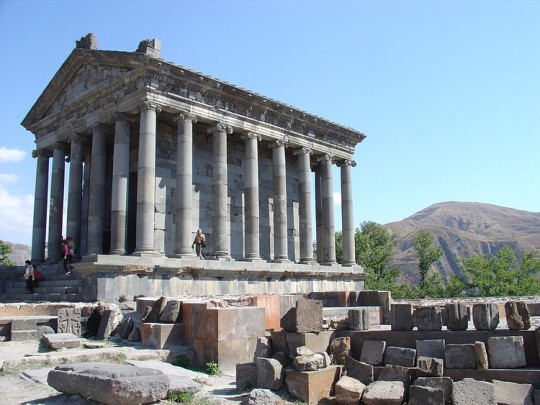
Ancient Armenia
Ancient Armenia, located in the south Caucasus area of Eurasia, was settled in the Neolithic era but its first recorded state proper was the kingdom of Urartu from the 9th century BCE. Incorporated into the Persian Empire of Cyrus the Great in the 6th century BCE, the Orontid dynasty ruled as Persian satraps, a function they performed for their next overlords the Macedonians and Seleucid Empire into the 3rd century BCE. Under the Artaxiad and Arsacid dynasties the country flourished but was often caught between the ambitions of Parthia and Rome, and then the Sasanian and Byzantine Empires. The boundaries of the state varied considerably over the centuries but such common factors as religion and language were united by long-lasting dynastic clans, which gave Armenia its own unique identity throughout antiquity.
Hayasa-Azzi (1500-1200 BCE)
The first identifiable culture in the region is the Hayasa-Azzi, an indigenous tribal confederation which flourished on the fertile plateau of ancient Armenia around Mount Ararat and parts of modern-day eastern Turkey between c. 1500 and c. 1200 BCE. The Hayasa-Azzi are the eponym of the Hay people, the term Armenians use to describe themselves and their state, Hayastan. Over time, the Hayasa-Azzi mixed with other ethnic groups and local tribes such as the Hurrians, Arme-Shupria, and Nairi, probably motivated by the need for defence against more aggressive and powerful neighbours like the Hittites and the Assyrians. They were probably infiltrated by the Thraco-Phrygians following the collapse of the Hittite Empire c. 1200 BCE. Eventually, these various peoples and kingdoms would be fused into the region's first recognisable and recorded state, the kingdom of Urartu from the 9th century BCE.
Continue reading...
101 notes
·
View notes
Text
currently obsessed with the idea that the dido we see in aeneid 1 and 4 isn't the real dido-- and not just because she's acting under the influence of venus and cupid. she's literally not the real dido, she's an eidolon, an imago.
because as vergil and his readers know, carthage was founded in 814 bce, and the trojan war ended in 1184 bce, 370 years too early for aeneas to actually run into dido. now there are a couple of ways you can deal with this: you can say that vergil moved the foundation of carthage 370 years earlier for the purposes of his story. or you can say that aeneas and his men travel to the 9th century when they go to carthage and then back to the 12th century when they leave for italy.
or you can say that actually nobody and nothing moves in time. aeneas goes to carthage in the 12th century, 370 years before it was founded by dido. he sees a mirage of a city ruled by a phantom queen. so when he goes to the underworld in book 6 and sees the shade of dido, she doesn't know him and turns aside because that's the real dido who lived and founded carthage in the 9th century and killed herself to avoid being forced to marry iarbas and never met aeneas. that's how the underworld works, it's populated by people who haven't been born yet by aeneas' time but are still there already dead. dido isn't like a ghost like anchises, she's a ghost like marcellus.
669 notes
·
View notes
Text
I keep seeing a post going around saying that people should stop using the “colonized” names for cities in Israel/Palestine and should instead use the Arabic names.
I need you guys to be so for real right now, Hebrew is quite literally the indigenous language of the area. Like believe what you want about Israel, but Hebrew objectively and factually originated in that land. The earliest record of written Hebrew is the Khirbet Qeiyafa inscription, found near Beit Shemesh which dates back to the 11th-10th century BCE.
The first record of the name Jerusalem is in the Egyptian Execration Texts which date back to the 20th century BCE.
Arabic was introduced to the land in the 7th century CE. The first recorded use of “Al-Quds” was in the 9th century CE.
I could do this for every single ancient city in the land. Bethlehem, Hebron, Jericho, Jaffa, Beer Sheva, Acre, and Ashkelon all existed prior to the Arab conquests in the 7th century CE and the introduction of Arabic to the land.
The fact that we use the Hebrew names of these cities isn’t some conspiracy to make them sound “more Jewish”, the modern Hebrew names are direct descendants of the ancient Canaanite words for these places. Hebrew is the only surviving Canaanite language.
Believe what you want about Israel, but claiming that the Hebrew names for these cities are “colonial” names is a disgusting erasure of Jewish history in the land.
#israel#jews#jewish#hebrew#arabic#israel palestine conflict#palestine#I have a feeling I’m gonna get hate for this but honestly I had to say something#y’all are willingly spreading pan-Arabist propaganda
100 notes
·
View notes
Photo
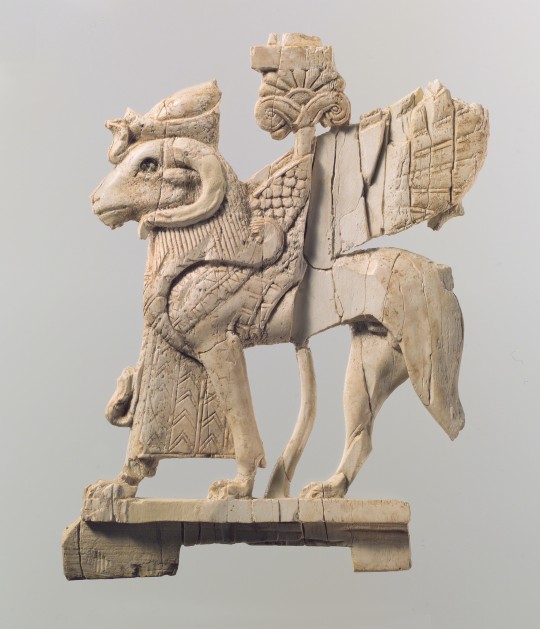
Openwork furniture plaque with ram-headed sphinx. ca. 9th–8th century BCE. Credit line: Fletcher Fund, 1957 https://www.metmuseum.org/art/collection/search/324685
#aesthetic#art#abstract art#art museum#art history#The Metropolitan Museum of Art#museum#museum photography#museum aesthetic#dark academia
68 notes
·
View notes
Text
youtube
Da Ke Ding, September 23, 2016
Da Ke Ding, c. 1046 - 771 B.C.E. (late Western Zhou dynasty, China), bronze, 93.1 cm high (Shanghai Museum) Speakers: Dr. Kristen Chiem and Dr. Beth Harris. Created by Beth Harris and Steven Zucker.
Smarthistory
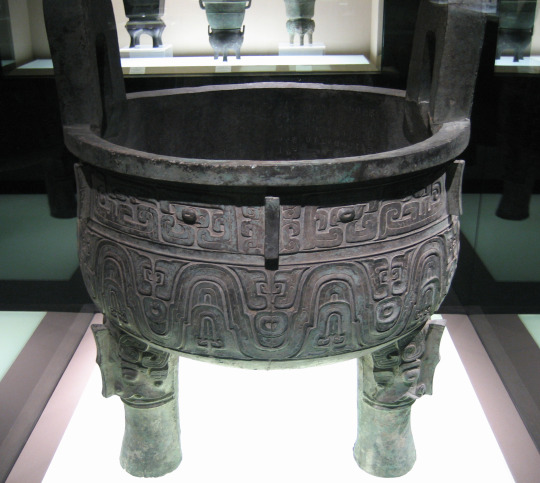
Da Ke ding (大克鼎), Western Zhou (1046–771 BC), China
Bronze
Height 93.1 centimetre (36.7 in); width 75.6 centimetre (29.8 in) (bore),
74.9-centimetre (29.5 in) (inside diameter); weight 201.5 kilogram (444 lb)
Discovered in Famen Town, Fufeng County, Shaanxi in 1890.
Collection of the Shanghai Museum
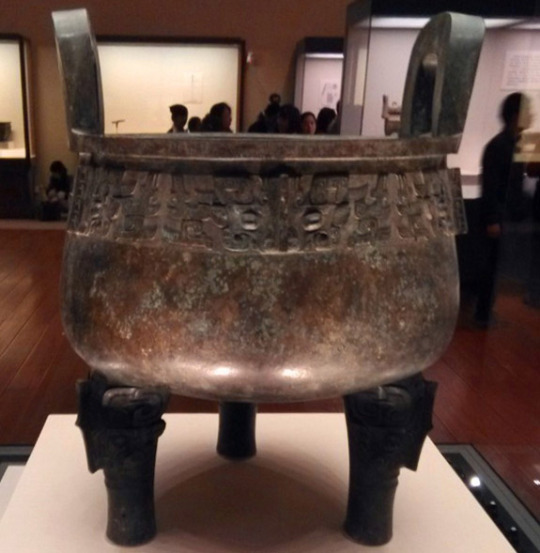
Da Yu ding (大盂鼎), early 10th century BC
Western Zhou (1046–771 BC), China
Bronze
Height 101.9 cm (40.1 in), width 77.8 cm (30.6 in), weight 153.5 kg (338 lb)
Discovered in Li Village, Jingdang Township, Qishan County, Shaanxi in 1849.
Collection of the National Museum of China


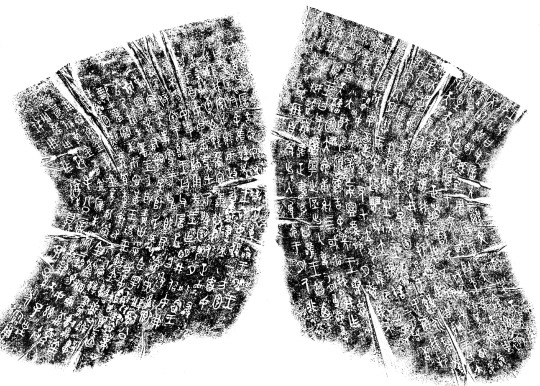
Mao Gong ding (毛公鼎), 857-828 BC
Late Western Zhou (1046–771 BC), China
Bronze
Height: 53.8 cm, depth of belly: 27.2 cm, diameter: 47 cm, weight: 34.7 kg
Discovered in Qishan County, Shaanxi in 1843.
This "ting" cauldron has a wide, flared mouth, a linked ring motif decorating the rim, upright handles, and three hoofed feet. The inscription, which can be divided into seven sections, describes how when King Xuan of Zhou came to the throne, he was anxious to see the country thrive, and charged his uncle, the Duke of Mao, with governing the domestic and external affairs of state, big and small, and to do so conscientiously and selflessly. The inscription goes on to state that the King then presented the Duke with official vestments and gifts, and that this vessel was cast in order to record the honor given to the Duke for his descendants.
Collection of the National Palace Museum, Taipei
#Western Zhou dynasty#Zhou dynasty#Chinese#art#art history#1st millennium bce#9th century bce#10th century bce#metal#bronze#language#taotie#pattern#design#archaeology#national palace museum#national museum of china#shanghai museum
3 notes
·
View notes
Photo

Samhain: The Ancient Celtic Origins of Halloween
Halloween is one of the most important days of the year among many Wiccan and goth communities. It is also a fun mainstream holiday that kids with a sweet tooth look forward to all year!
Halloween is based on an ancient Celtic festival known as Samhain, which marked the end of the harvest season and the start of the cold and dark winter months. The supernatural was thought to be more potent during this darker half of the year, and rituals conducted at Samhain would protect the community over the coming months.
Many modern Halloween practices draw on the traditional rituals conducted around Samhain, brought to the United States by Irish and Scottish immigrants. But let’s take a closer look at the traditional Samhain festival.
Gaelic Festival of the Harvest
Samhain belongs principally to the Gaelic world. It was an important festival day in Ireland, Scotland, and the Isle of Man. It was held annually on 1 November, which meant celebrations started during the evening on 31 October since the Celtic day began at sunset.
While Samhain was best associated with the Irish world, similar festivals were conducted around the same time of year by other Celtic communities. In Wales, it was known as Calan Gaeal, in Cornwall as Kalan Gwav, and in Brittany as Kalan Goanv.
It is no surprise that this date was considered important by many different communities. It is halfway between the Autumn equinox and the Winter solstice, which, in the northern hemisphere, is when the days start to get shorter and colder. This was extremely significant in many parts of the world, such as northern Europe, where the sun barely rises in the height of winter. The Norse people living in Scandinavia also marked this important moment in the Wheel of the Year with a different festival known as Alfablot.
Ancient Festival
There is good evidence that Samhain was an ancient festival. Several Neolithic passage tombs found in Ireland are aligned with the rising sun on Samhain, suggesting that the date was already marked out as important. A first-century BCE calendar, known as the Gaulish Coligny Calendar, calls this time of year Samoni.
The earliest clear evidence for Samhain as we know it today comes from the earliest examples of Irish literature, which date to the 9th century. Ireland was already Christianized by this time, so the traditions and practices described are a mix of old Pagan customs and Christian overlays and influences.
There is some evidence to suggest that the Pagan festival of Samhain was associated with the god Chrom Cruach, who seems to have been both a solar and a fertility deity. He is a wizened god hidden by mists who accepts “firstborn” sacrifices in exchange for good harvests.
While firstborn sacrifices were probably, in many cases, first harvests, there is also evidence that Chrom Cruach received human sacrifice. But rather than babies, he seems to have received kings. It is suspected that several Irish bog burials represent the ritual sacrifice of kings or other important persons. There is good evidence that many of them were interred around the time of Samhain.
Samhain Gatherings
By the 9th century, Samhain was a time of festival and celebration. Communities would gather in large groups to eat, drink, and be merry for about a week around the specific dates of Samhain. This meant that Samhain also had political importance as it was a time to reaffirm bonds with neighbors and allies, and leaders could confirm and pass rules and laws.
Many of the stories of Irish literature are set during Samhain as this is a time when people came together for festivities, marriages, and also conflict.
With the community gathered, the practice of mumming or guising, the root of trick-or-treating, was practiced. People would dress up in masked costumes to hide their identities and go from place to place dancing and reciting verses in exchange for food. Traditions around hospitality and welcoming guests meant that denying these passersby food could bring bad luck and perhaps also a trick from the disappointed players.
Day of the Dead
Samhain and also Beltane, which falls on May 1 when the days start to get longer, are considered liminal moments. At these times, the veil between the worlds is at its thinnest, and there is more interaction between the mortal and the supernatural. Ghosts, fairies, and demons are considered to be more powerful when the sun is weak, so Samhain marks the beginning of a dangerous period in general. The festival is a portal moment when forces can easily move between worlds.
In Irish literature, there are many stories of deceased ancestors returning to see their homes at Samhain (and they aren’t always happy with what they see!). More dangerous entities can also pass between the worlds, killing livestock and burning down homes if they so choose.
For this reason, Samhain rituals were often conducted at burial mounds, which were considered portals to the other world. Protective bonfires were built, and sacrifices were made to appease the spirits, called collectively the Aos Si. When people returned home, they would take a spark from the ritual bonfire to light their own hearth and lay out an extra plate for the honored ancestors.
Divination
The thin veil between the world meant that this was also the perfect time for divination practices. For example, stones were often cast into the bonfire during the festivities, and then an experienced diviner could read the future based on their positioning and burning.
Back at home, families would also engage in fun divination practices, often using apples and hazelnuts, both associated with the practice.
Games such as bobbing for apples could reveal whether a person would marry or have children in the coming months. People would also peel an apple in a single long strand while asking a question. They would then throw the peel over a shoulder, and the shape of the peel could provide an answer.
Two hazelnuts were named for an individual and their heart’s desire and then placed on the fire to roast. If the hazelnuts jumped away from the fire, this was not a good sign for the match. But if the two roasted quietly side by side, this was a good omen.
Interested in divination? You will find Tarot Cards and Runestones in the store. Read our guide to how to use Tarot Cards here.
Witches of Samhain
In modern Paganism and Wicca, Samhain has been adopted as one of the principal Sabbats of the Wheel of the Year. While practices vary, these modern festivals are also based on the belief that this is a moment when the veil between the worlds is thin, so this is the ideal time to engage with our ancestors and the supernatural.
It also seems that Samhain has long been the domain of witches. One of the principal sites in Ireland where Samhain bonfires were built and rituals conducted is known as the Hill of Ward, which is the burial mound for Tlachtga.
Tlachtga was the daughter of the Arch Druid Mug Ruith, and she traveled with her father, learning his secrets and becoming an accomplished witch. She was reportedly raped by the sorcerer Simon Magus and, as a result, gave birth to three sons on this very mound, where she also died.
The resting place of the powerful witch was clearly considered a potent portal during the time of Samhain.
Some believe that Tlachtga only became a witch in Christian sources and, before this, was a Pagan sun goddess. This would also make her an appropriate goddess for Samhain, alongside the sun dog Crom Cruach.
How will you be celebrating Halloween?
It is not hard to see the roots of modern Halloween practices in many of the rituals and activities associated with the ancient Gaelic festival of Samhain. But for most people, Halloween has lost its spiritual meaning and is just some good fun.
But there is a growing group of Neopagans and individuals who just want to connect more with the natural cycles of the year that are reviving traditional Samhain practices.
So, the question is, how will you be celebrating this important date in the calendar? Let us know in the comments section below.
[Read full blog post here]
#grimoire#samhain#witchy#witchcraft#wicca#occult#pagan#paganism#celtic#halloween#babywitch#witches of tumblr#witchblr#magick#pagan witch#beginner witch#witch community#book of shadows#witch tips
512 notes
·
View notes
Photo

Assyrian sculpture of a tribute bearer, dating back to 9th century BCE. The alabaster bas-relief was discovered in the Assyrian city of Nimrud. The Pergamon Museum, Berlin, GERMANY.
Photo by Babylon Chronicle
366 notes
·
View notes
Text

Brick with guilloche design
Neo-Assyrian, ca. 9th century BCE
Mesopotamia, Nimrud (ancient Kalhu)
Ceramic, glaze
Collection Met Museum
45 notes
·
View notes
Text
Time Travel Question 26: Ancient History XIV and Earlier
These Questions are the result of suggestions from the previous iteration.
This category may include suggestions made too late to fall into the correct grouping.
Please add new suggestions below if you have them for future consideration. All cultures and time periods welcome.
#Dʿmt#Time Travel#Ötzi#Bronze Age#Prehistory#The Bible#Siddhartha Gautama#Jesus of Nazareth#Religious History#Early Humans#Ötzi the Iceman#Textiles#History of Textiles#Ethiopian History#Slavic History#Lechitic Peoples#Lost Literature#The Tully Monster#Iberia#Spanish history#Ancient World
89 notes
·
View notes